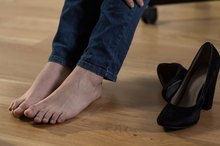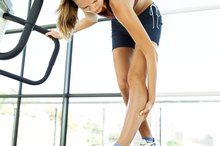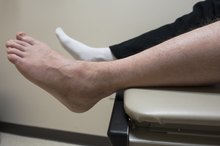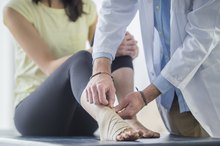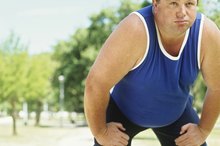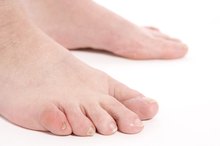What does fact checked mean?
At Healthfully, we strive to deliver objective content that is accurate and up-to-date. Our team periodically reviews articles in order to ensure content quality. The sources cited below consist of evidence from peer-reviewed journals, prominent medical organizations, academic associations, and government data.
The information contained on this site is for informational purposes only, and should not be used as a substitute for the advice of a professional health care provider. Please check with the appropriate physician regarding health questions and concerns. Although we strive to deliver accurate and up-to-date information, no guarantee to that effect is made.
What Are the Treatments for Edema in Leg?
Leg edema or swelling, also called peripheral edema, is a common problem especially among the elderly. There are general treatments that people can try to help alleviate leg edema; however, treating the cause of the edema will provide the best results. Leg edema can occur because of heart problems, poor peripheral circulation, or from fluid retention because of kidney disease. People who stand or sit all day often suffer from leg swelling.
If you are experiencing serious medical symptoms, seek emergency treatment immediately.
Treat Underlying Causes
According to Donna D. Ignatavicius, M.S 1. Taking medications as prescribed and following treatment protocols outlined by your physician will help minimize leg edema that occurs as a symptom of an underlying health problem. For benign leg swelling, other treatments may be sufficient.
Elevate
How to Lower Water Weight in Legs & Feet
Learn More
Elevating the legs is an easy way to help decrease leg swelling. Scott and White Hospital patient education information advises that you raise your legs above the level of your heart when you lie down. If possible, raise your feet on an ottoman or recliner when sitting. When you go to bed, raise your lower legs on a pillow.
- Elevating the legs is an easy way to help decrease leg swelling.
- If possible, raise your feet on an ottoman or recliner when sitting.
Move Around
If you stand or sit for long periods of time, make sure to take breaks and move around. When you stand a long time, blood pools in your lower legs. When you sit for a long time, you compress the major blood vessels in your legs, interfering with normal circulation. Change positions frequently and walk around to allow for adequate circulation.
- If you stand or sit for long periods of time, make sure to take breaks and move around.
- When you sit for a long time, you compress the major blood vessels in your legs, interfering with normal circulation.
Support Stockings
How to Lower Water Weight in Legs & Feet
Learn More
The American Association of Family Physicians suggests using support stockings to help control leg swelling. You can purchase support hose at the supermarket or local drug store. If you have a lot of leg swelling or a problem with peripheral circulation, your physician may prescribe support hose. Support stockings help compress peripheral blood vessels thereby improving the return circulation to the heart, helping to decrease leg edema.
- The American Association of Family Physicians suggests using support stockings to help control leg swelling.
Low Salt Diet
Too much sodium will cause fluid retention. Following a low salt diet will help reduce fluid retention and lower leg edema.
Control Weight
Being overweight or obese can cause problems with circulation. Controlling your weight can help minimize leg swelling.
Avoid Restrictive Clothing
Avoid wearing restrictive or tight clothing. Anything that interferes with normal circulation can cause a problem with peripheral edema.
Diuretics
Sometimes physicians will prescribe a diuretic to help remove extra fluid from the body. People who have heart disease and kidney disease often require diuretics to help treat leg edema.
Related Articles
References
- “Medical-Surgical Nursing--Critical Thinking for Collaborative Care”; Donna D. Ignatavicius M.S., R.N., & M. Linda Workman Ph.D.; 2006
- FamilyDoctor.org: Edema
- Adukauskiene D, Bivainyte A, Radaviciūte E. Cerebral edema and its treatment. Medicina (Kaunas). 2007;43(2):170-6.
- Cleveland Clinic. Edema.
- Ely, JW, Osheroff JA, Chamblis ML, et al. Approach to Leg Edema of Unclear Etiology. J Am Board Fam Med March 2006, 19 (2) 148-160; DOI: 10.3122/jabfm.19.2.148
- Familydoctor.org. Edema.
- Mayo Clinic. Pulmonary edema.
- Medline Plus. Edema.
- Medline Plus. Pulmonary Edema.
- National Eye Institute. Facts About Macular Edema.
- NCBI Bookshelf. Causes and signs of edema.
- Porter D. What is Macular Edema?
Resources
Writer Bio
Patricia Nevins is a registered nurse with nearly 20 years of nursing experience. She obtained her Master of Science in nursing with a focus in education from the University of Phoenix. Nevins shares her passion for healthy living through her roles as educator, nursing consultant and writer.

